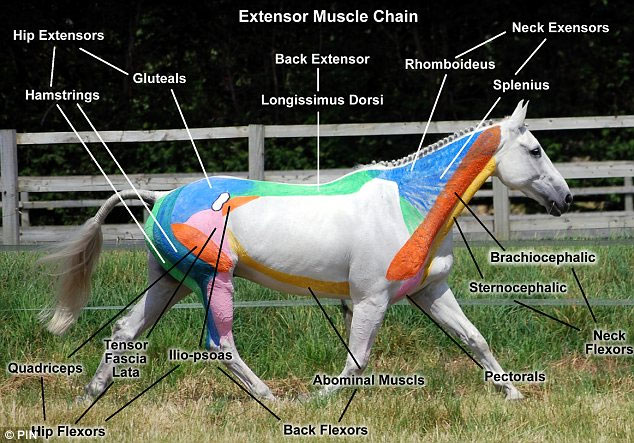
The equine neck and its function during locomotion (1)
This review offers an overview of the current scientific findings on the biomechanical functions and structures of the equine neck. These findings are divided in 7 chapters. This summary focuses on the first two.
1. Evolution and development of the skeletal structures
The evolution of vertebral formula divides the vertebra column into functional subunits, which are the craniovertebral articulation (C1–C2), the muscularisation of the diaphragm (C3–C5), and the muscularisation of the forelimb (C6–C7). This specialisation was useful for respiration and locomotion.
2. Muscle function
As the mass of the head (4%) and the neck (6%) represent about 10% of the body mass of the horse, the large distance of these masses from the body’s centre of gravity affects the movement of the entire horse.
A combination of surface electromyography (EMG) and kinematic measurements identified the m. splenius as a tonic, supporting neck muscle in all gaits. The m. splenius was least active in the unrestricted head/neck position, more active in the maximum flexed head/neck position (cranial neck flexed), and most active in the collected head/neck position. The m. brachiocephalicus was found to be more active, and the m. trapezius less active, in the position with maximum flexion of the cranial neck and head than in the standard collected position.
Active stabilisation of the vertebral column is mainly achieved by the co-activation of antagonistic muscles, neck flexors (m. cleidomastoideus and m. cleidobrachialis) and extensors (m. splenius and m. omotransver- sarius). In neutral position old horses showed increased extensor activity compared to mature horses, indicating that old equine muscles require more activity to counteract gravity.
The following chapters continue in upcoming summaries:
3. Elastic structures
4. Segmental movement of the neck vertebrae
5. Biomechanical models of the equine head and neck complex
6. Overall movement of the neck and its effect on the whole body
7. The equine neck in relation to work
1) General (English) riding and dressage
2) Show jumping
3) Behavioural changes
> Zsoldos et al., Zoology (2015). All rights reserved to 2015 Elsevier GmbH. Click here for the Pubmed summary

